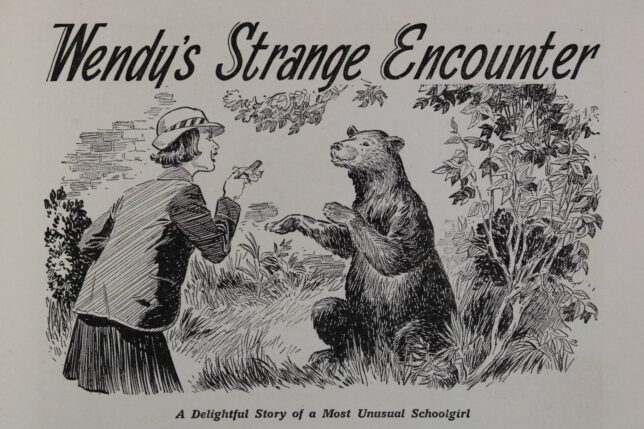My name is Sue and I am a post-graduate student on the MLitt. Writing Practice and Study course at Dundee University. I am currently spending Fridays here at the Women’s Library working on our upcoming #FlashFictionFriday project. Writing has always been a great friend to me – putting pen to paper (or these days, finger to keyboard!) is often how I make sense of what is going on around me or inside my head. It is a great way to explore troubling thoughts or feelings and I find it can be an effective way of bringing emotional release from these. But more than the undoubted health and well-being benefits of writing, I love stories. I love writing them, sharing them, reading them, telling them, listening to them, uncovering them in all the everyday spaces around me. Buses, for instance, are fantastic places for uncovering stories!
Stories are as old as the human race itself and our ancestors told stories long before they were able to write them down. Some of the oldest stories we have inherited were drawn on the walls of our cave-dwelling forbears. We are all story-tellers and everyone has a story to tell, whether it be of real or imaginary events. Over the course of the next couple of months I shall be diving into the wonderful GWL archive to discover interesting images which can stimulate our creative imagination and unlock some exciting stories which are waiting to be written and told by you.
Each Friday I shall introduce a new image. Your story does not have to describe or be explicitly linked to the given image – the images are there simply to inspire you. However, your story should fit into the format of a Tweet (or a series of linked Tweets) and be told, if you can, in less than 240 characters! Remember to tag us @womenslibrary!
This need not be as daunting as it may initially sound. One famous short story, commonly credited to Ernest Hemingway, is told in just six words: ‘For sale: baby shoes, never worn.’ The story here is in the two words “never worn” which introduce the unexpected. They create interest and lift the text away from the ordinary, suggesting a much larger backstory. It is up to us, the reader, to imagine why the shoes remain unworn. Below I have put together some top tips to consider when writing a very short story, also known as flash or postcard fiction. They are just suggestions; feel free to dip into them or disregard them – your story, your rules! If you don’t have Twitter but would like to share a response, you can email us at info@womenslibrary.org.uk. If you have a story but are unable to type your story into a Tweet, please feel free to phone me at Glasgow Women’s Library any Friday and I can type it up for you.
Flash Fiction:
- Tells a very short story, in this case in up to 240 characters
- Requires the narrative to be brief, so there can be no lengthy introductions/conclusions – cut to the action fast!
- Often focuses on one scene and one or two characters
- Each word must add something to the story – therefore make every word count
- Can suggest a wider backstory. Because of the limited character count, it may be difficult to present the whole story – but you can hint at the story beyond the story (as in “never worn”)
- Requires the reader to imagine parts of the story which are not supplied. Readers are good at doing this – trust them!
I really can’t wait to read your submissions and to share them on our website! To get you ready for the first edition of #FlashFictionFriday next week (8th February), here’s the prompt from our archive…


Comments are closed.